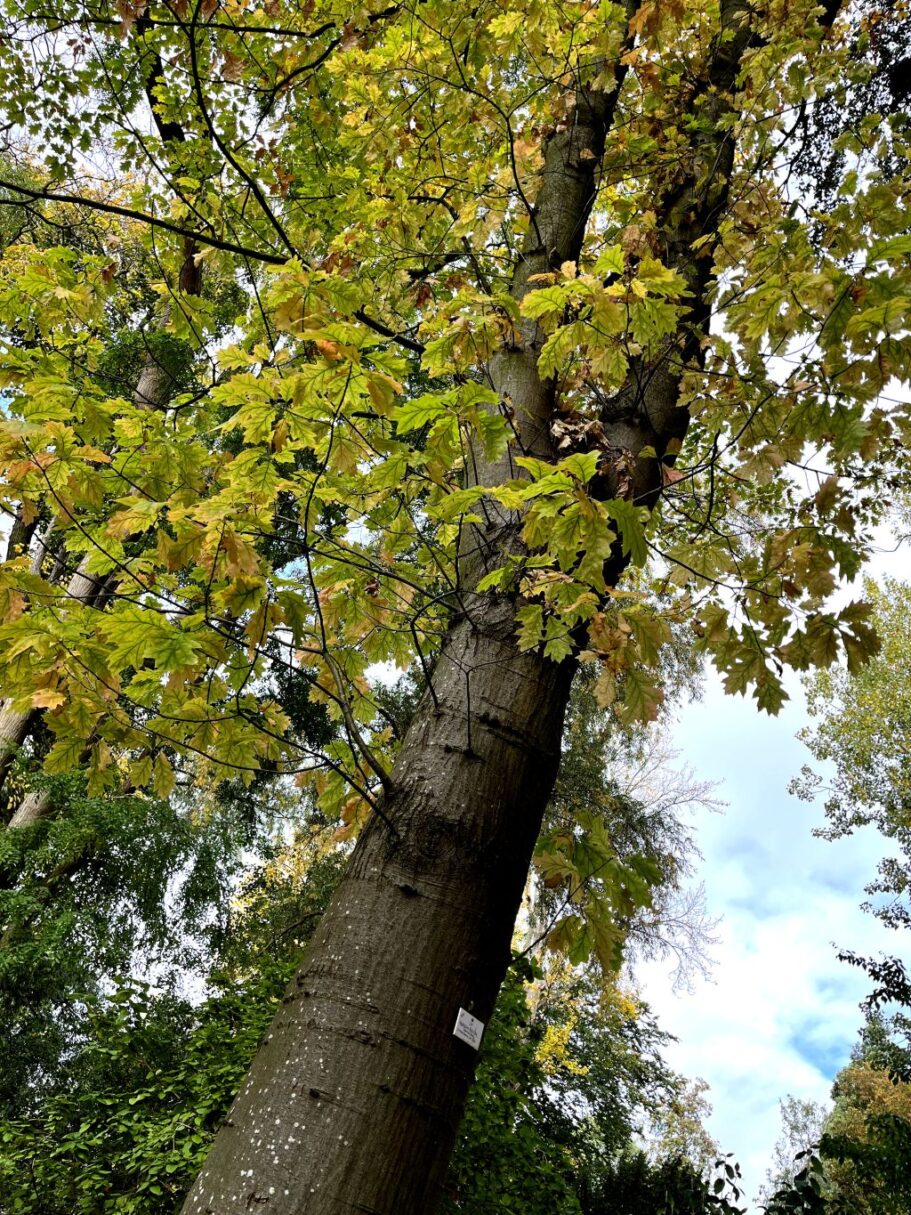#39 AMERICAN RED OAK
Quercus rubra

Planted: 1922
View On MapThis tree is at the junction of the Grass Path and the Park Drive Path.
| Distribution: | Eastern North America, Nova Scotia to Georgia, and west to Oklahoma and Minnesota. Native to the Chicago region. |
| Planting Date: | November 1922 from W Clibran & Sons, Oldfield Nursery, Altringham, Cheshire |
| Growth Habit: | Straight and tall. |
| Bark: | Smooth and light grey with vertical lines of lenticels and occasional horizontal ridges or hemispherical warts. |
| Leaf: | Smooth, 12 cm to 25 cm long, 7 to 9 pointed lobes. |
| Flowers: | Inconspicuous |
| Fruit: | Long acorn in shallow cup. |
| Toxicity: | Acorns must be leached to remove tannin, to make them edible. Leaves can be dried to use as a mild tisane (herbal tea). |
| Potential tree size | Over 30 m |
| Uses: | Mostly ornamental. Softer than English Oak but can be used for flooring, furniture and crates. When thoroughly seasoned, it is good for burning. |
| Plant Hunter: | Brought to England by early colonialists. |
| Introduction Date: | 1724 |
| Anecdotes and Comments: | Careful drying is needed to avoid cracking of wood when used in furniture making. Leaves, bark and inner bark used by indigenous Americans in traditional medicine. Acorns bitter but were eaten by indigenous Americans. |